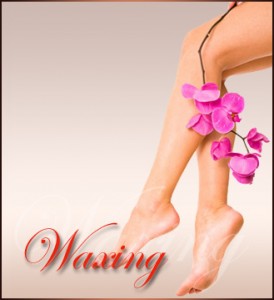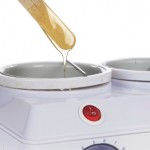10 reasons why Brazilian waxing is worth it
Here’s top 10 reasons why Brazilian waxing is worth it:
1. It is fast. (The first time, allow up to an hour or so, but it normally takes 20-50 minutes.)
2. Maintenance can be done monthly (as opposed to shaving, which needs to be done almost daily).
3. For the results you get, it is well worth the cost. I charge according to how long it takes. (There is a  maintenance price offered if you come on a regular basis.)
maintenance price offered if you come on a regular basis.)
4. The hair follicle is pulled by the root, so over time (barring hormonal and other unforeseen variables) it is discouraged from re-growing, and the hair can become softer and less dense.
5. The discomfort involved with this procedure is mainly associated with a sudden sensation as the hair is removed, but quickly diminishes.
6. It is a professional service and feels like pampering. I use essential oils, light candles, play music and use clean, fresh sheets.
7. Women prefer the “clean” feeling they get.
8. Skimpy swimwear requires grooming.
9. Ingrown hairs mostly associated with shaving are painful.
10. Body hair is not considered fashionable.
Exactly what is Brazilian waxing?
It is a type of waxing involving the bikini area. This procedure normally involves the complete removal of all hair in the bikini area, front to back. Some types of Brazilian waxing leave a small line of hair. It is named after Brazil, the country with which it is most often associated and from which the modern practice originated. In Brazil itself, it is not called Brazilian waxing, but simply depilar (to wax, to pluck hairs). In Middle Eastern societies, removal of the body hair is considered a proper form of hygiene, necessitated by ancient local customs. Contemporary sources indicate that the French nobility also practiced waxing during the 17th century.
And what is the process, you ask?
The client begins by completing a Wax Questionnaire. If this is not done where you go – run! The lack of a proper intake shows the level of care the salon takes in general.
You will remove your clothing from the waist down, use a disinfectant wipe. The procedure starts with the professional trimming the hair to about 1/8 of an inch, if needed. (Some service providers like to have you come already trimmed, but don’t overdo it or the wax won’t be able to grab the hair.) Then, a light application of oil is spread over the area to be waxed. This prevents the wax from sticking to the sensitive skin. Next, warm wax is applied in sections over the area from which hair is to be removed. The wax is allowed to harden briefly, then one edge of each wax is pulled off in the opposite direction of the hair growth. This procedure removes the wax, hair, and any dead skin cells lying on the skin surface. Finally, a soothing and healing post-wax essential oil is applied, as well as an antibiotic ointment.
The skill and experience of the service provider is key. The first time you do it, you may need “breaks” and a  slower pace to acclimate to the new experience. Most say they have less discomfort during subsequent treatments. There are over-the-counter products available if you are very sensitive. I don’t recommend any waxing immediately before (or during) your period when you are generally most sensitive. About a week after your period, if you can time it that way, is the ideal time.
slower pace to acclimate to the new experience. Most say they have less discomfort during subsequent treatments. There are over-the-counter products available if you are very sensitive. I don’t recommend any waxing immediately before (or during) your period when you are generally most sensitive. About a week after your period, if you can time it that way, is the ideal time.
I am a licensed Esthetician (skincare professional). There can be complications, side effects, or contraindications to the treatment, and a skincare professional can address these best.
As a professional, I need to include a few words of caution:
There is a risk of infection if done on a person with a weakened immune system.
Folliculitis can occur with sensitive skin. It usually appears as small, white-headed pimples around one or more hair follicles — the tiny pockets from which each hair grows. These may itch, but on occasion they’re painful. While most cases are superficial and short lived, often clearing up spontaneously within a few days, deep or recurring folliculitis may need medical treatment.
On rare occasions may flair a Herpes outbreak if you are prone. (You can take a medication from the MD to prevent this.)
Waxing during a “healthy” pregnancy is fine.
Here are my tips for a successful experience:
Use a licensed professional (an esthetic or cosmetology state license is required to be posted for public view).
Make sure the working conditions of the waxing salon, as well as the supplies, are clean and sanitary.
Get all your questions answered up front before you start (preferably on the phone when making the appointment), and be sure to discuss medications you take, medical history, contraindications, and other concerns.
Think about taking an anti-inflammatory before your appointment to help reduce swelling and discomfort.
Discuss post waxing care before you leave the salon. I use a special essential oil to help calm and soothe the area after the treatment.
Hard (strip-less) wax is best, it is designed for sensitive areas.
See you at the my Facial and waxing Studio! Click here to book your next appointment.